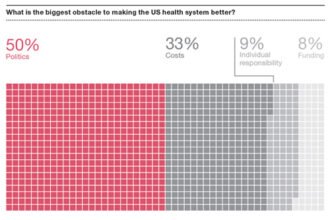Video Communications: From room to desktop to cloud. How the internet is enabling a new wave of video-enabled healthcare applications
Video Communications: From room to desktop to cloud. How the internet is enabling a new wave of video-enabled healthcare applications
 Once a complex expensive technology, video communications have gone from being a scarce resource that needs to be scheduled to one that is inexpensive, pervasive and available to all through the cloud. Advances in soft CODEC technologies, adaptive compression schemes, and out-of-the box support for video on a wide variety of computing and communication devices are allowing the virtual delivery of health services inexpensively with a minimal of dedicated equipment. The net effect is that now the scarce resources are the clinicians themselves, and the next driver for adoption and growth will not be video technologies, but rather technologies that seamlessly integrate video communications into existing clinical workflows to enhance quality and efficiency.
Once a complex expensive technology, video communications have gone from being a scarce resource that needs to be scheduled to one that is inexpensive, pervasive and available to all through the cloud. Advances in soft CODEC technologies, adaptive compression schemes, and out-of-the box support for video on a wide variety of computing and communication devices are allowing the virtual delivery of health services inexpensively with a minimal of dedicated equipment. The net effect is that now the scarce resources are the clinicians themselves, and the next driver for adoption and growth will not be video technologies, but rather technologies that seamlessly integrate video communications into existing clinical workflows to enhance quality and efficiency.
For medical device manufactures, advances in video communication technologies are providing market opportunities that go far beyond simply providing devices that exist only to serve as imaging endpoints. The evolution of cloud-based video communication is enabling manufacturers to provide video-enabled services as part of their product, as well as opportunities to provide video applications. The later are applications built around video devices and platforms that provide a new frontier of interactive enablement.
To understand the concept of “video applications” and their potential implications, we can look to cell phones and mobile applications as an illustrative example. The cell phone is an endpoint and initially a high-value component that the end consumer had to pay a lot of money for and had limited choices in what device to purchase. The cellular networks dictated which devices you could purchase and use on their networks. As these devices were not cross-network compatible, the value they provided was letting you access the cellular network to make an audio connection. Fast forward to today and cell phones are a commodity. Consumers can purchase handsets of choice from a variety of sources, and if you have a GSM device, you can now utilize that device with a variety of carriers. Now the distinguishing value of these devices is not so much the handset itself, but in the applications the device can run. Android and iOS-based devices have given cellular users an almost unlimited marketplace of applications and services, and are, to many users, the real value they derive from their mobile devices.
Now think video applications – applications built around video devices and platforms providing a new frontier of application enablement. Until now, this was not practical due to the cost and complexity of capturing, encoding, routing, transmitting, decoding and displaying a moving image of high quality, the need for dedicated networks for carrying this data, the lack of unifying standards for cross network/device interoperability, and the need for dedicated IT staff to set up, operate, support and maintain these systems. But now video has entered the cloud, and Video-as-a-Service (VaaS) promises to be the next wave of what’s new and trending in cloud technologies.
In closing, medical device and HIT solution developers need to think beyond video communication as a fixed offering. The cloud exists as a shared environment, and the deliverable is fairly static, much like the iTunes experience. It’s similar to all users, and the experience is fixed. Unlike embedding static video communications hardware, VaaS does not have to be a canned, hope-it-works, experience. By utilizing today’s cloud-based, video communications platforms, manufacturers of medical devices can deliver truly unique and flexible experiences, and can therefore offer value comparable to an internal, custom-developed solution.








